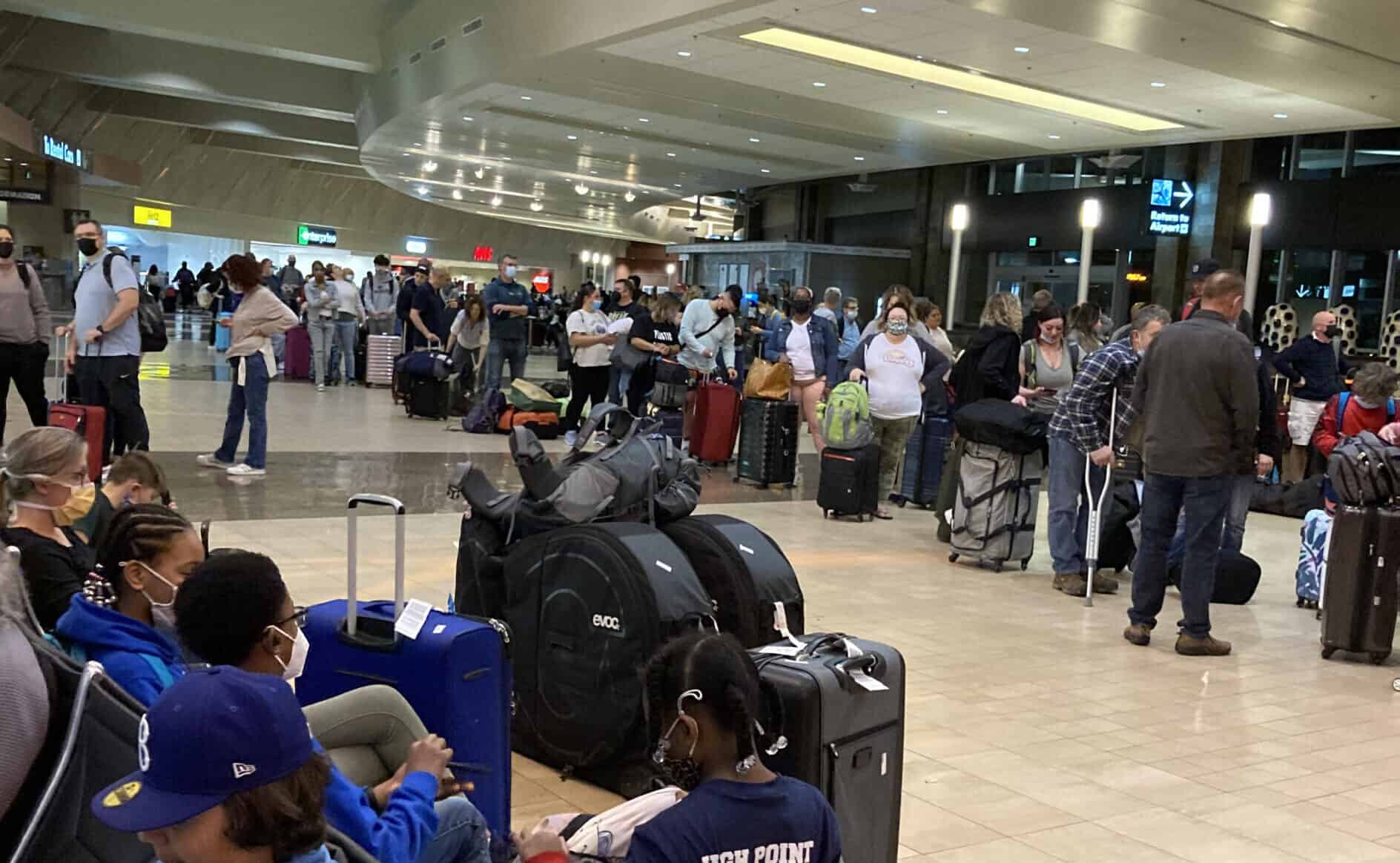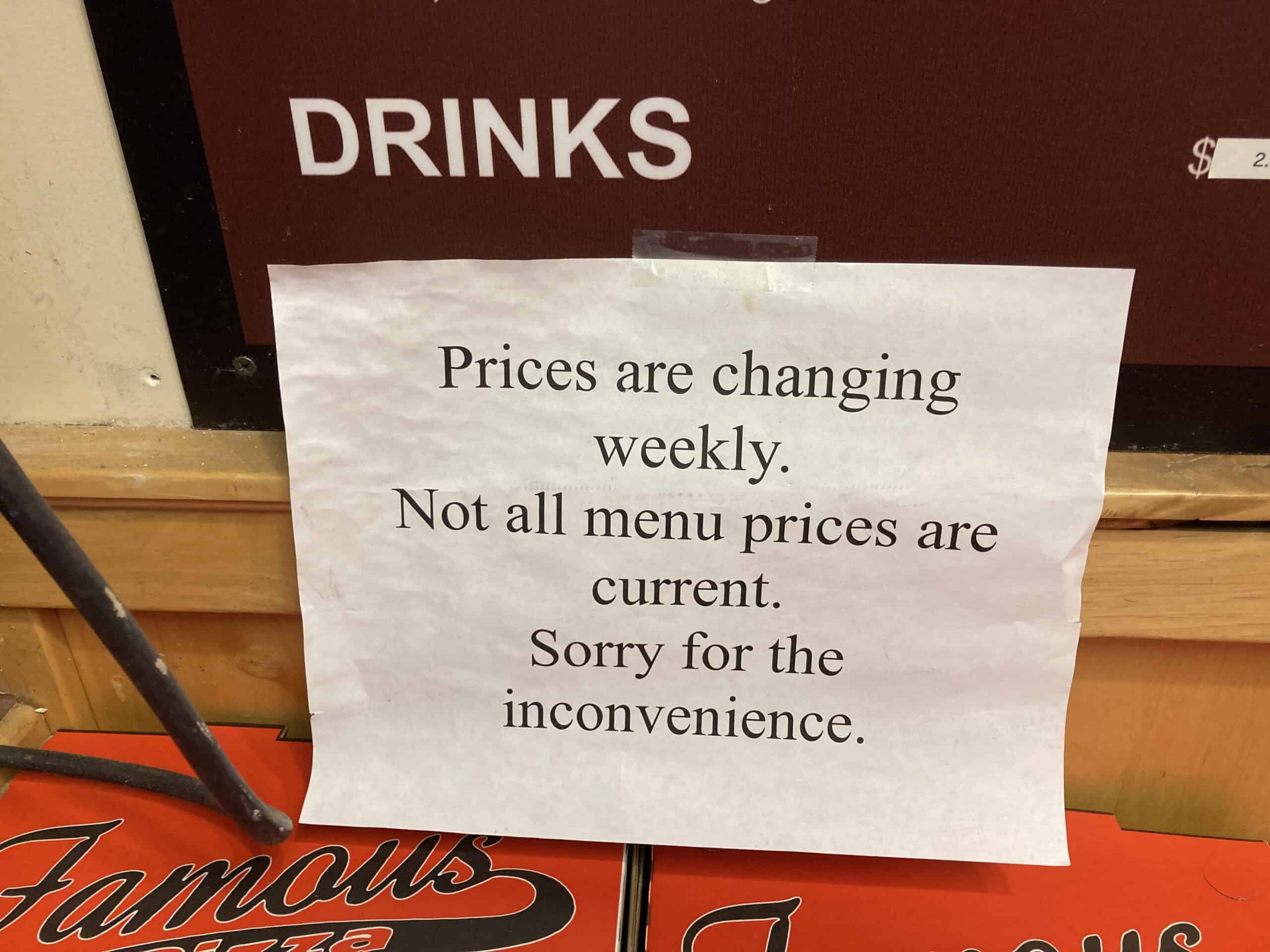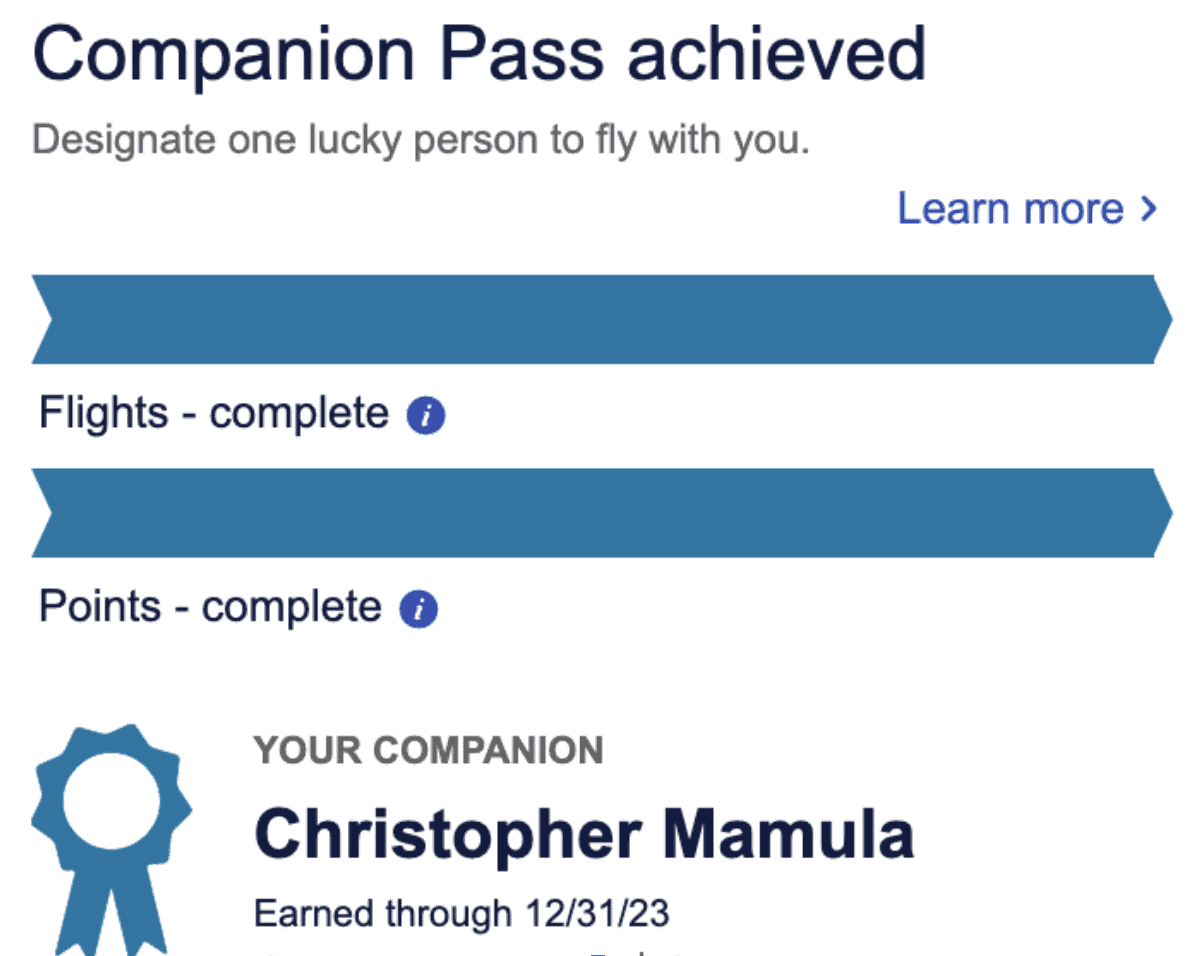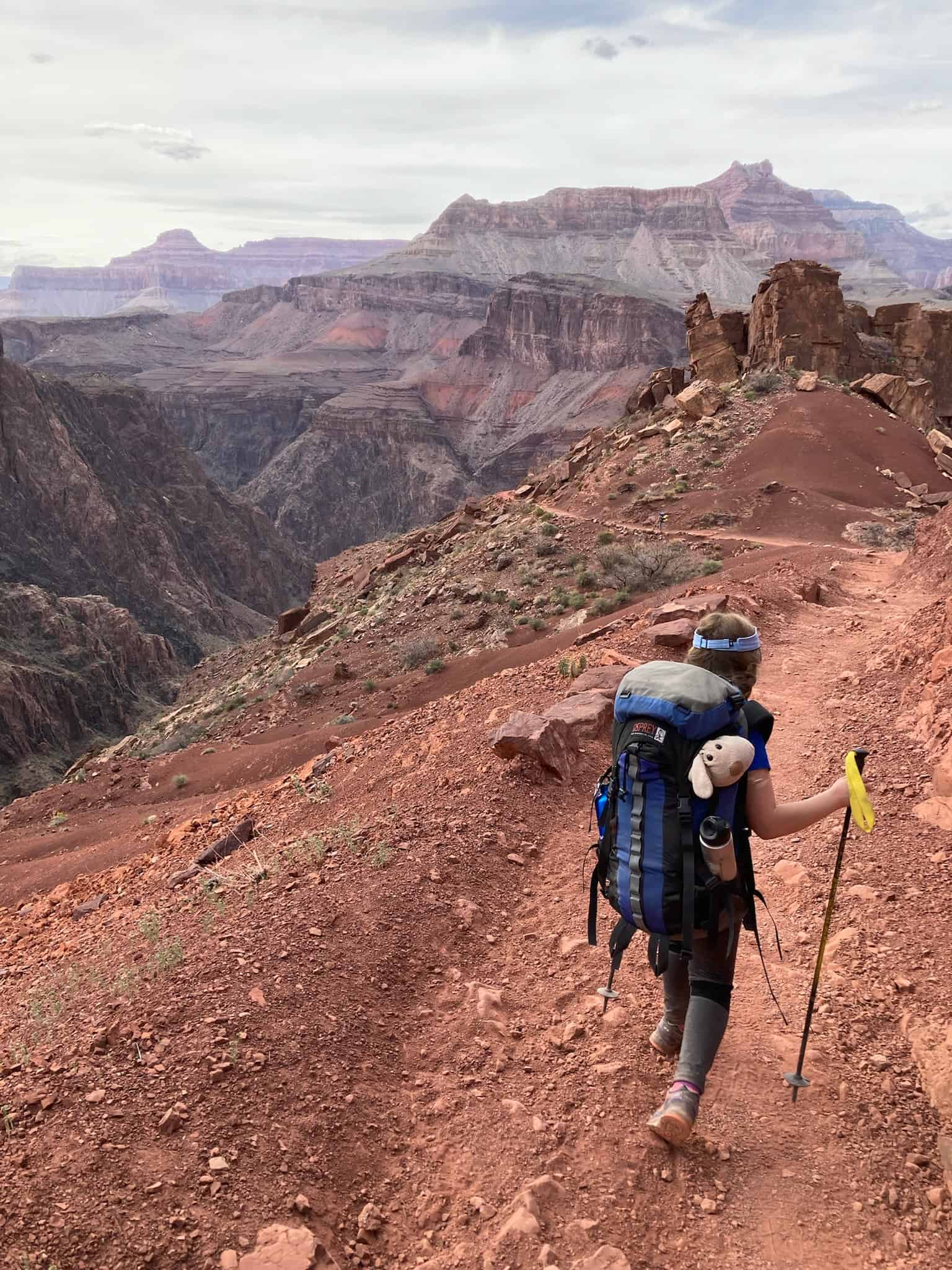Challenges and Rewards of Traveling in 2022
Can I Retire Yet? has partnered with CardRatings for our coverage of credit card products. Can I Retire Yet? and CardRatings may receive a commission from card issuers. Opinions, reviews, analyses & recommendations are the author’s alone, and have not been reviewed, endorsed or approved by any of these entities.
Spring will soon be turning to summer. Travel is on our minds.
Our family recently completed an awesome adventure. We backpacked in the Grand Canyon over my daughter’s spring break. We are also knee deep in planning our travel for the remainder of the year.
These experiences have been eye opening. They provide case studies on topics that have been covered on the blog over the past few years (including inflation, supply chain issues, worker shortages, and ongoing COVID challenges) playing out in real time.
Learn how we’re preparing to have more enjoyable travel in these challenging times and why it is worth the increased effort and hassles.
Incredible Demand
My first observation from our recently completed trip and future preparations is that there is incredible demand for all things travel related. This should not surprise anyone.
For the past two plus years, COVID has dominated our day-to-day lives. People are champing at the bit to get out, experience life and make up for lost time.
We are a prime example. In addition to our normal desire of travel, we had several use it or lose it travel credits due to pandemic related travel cancelations.
While this increased demand for all things travel related was apparent in our preparations, a few areas stood out.
Hotels
We have been building up hotel points and wanted to use them for this trip. Last November, we received confirmation of our hiking permit dates for this April. We immediately began booking our accommodations.
Our first order of business was getting a room near the Grand Canyon for the night prior to our hike. We wanted to make sure we were well rested the night before beginning our 4 day, 3 night backpacking trip.
We were able to get a room utilizing IHG reward points at the Holiday Inn Express & Suites Grand Canyon. After taking a few days to firm up our itinerary, we tried to book a night at the same location after we came out of the canyon. No bueno.
Reward nights were booked and the cash prices in the area started around $300/night for basic accommodations. We changed plans and decided to drive to Sedona, Arizona where we were able to book the night with reward points.
After the craziness of the Christmas holiday season died down, we reconsidered our itinerary when we had more time. We were still nearly four months out. Not only were the IHG reward nights now blacked out in both locations, there were few hotels with any vacancies. Those that did were charging outrageous prices.
So we kept our original reservations and decided to spend our first and last night of the trip before flying home near Phoenix where there were more hotel options.
Rental Cars
It’s been a while since we rented a car. After reading about car shortages, I was nervous to see what this would cost. I was shocked to find prices for economy cars started at about $100/day. Prices went up quickly from there for larger or more luxurious vehicles.
We paid up, assuming that at least we had a vehicle for our trip. As I’ll share in detail later in this blog post, that was a dangerous assumption….
Outdoor Activities
Many of our travels revolve around outdoor adventures. We choose these activities to escape the stress of everyday life and take a break from crowds. Both are getting harder.
One way of limiting crowds is requiring permits and reservations for some popular locations and activities. Since returning from our trip, several people told me they were unsuccessful in trying to get permits to do a similar hike in the Grand Canyon.
Our trip was originally scheduled for 2020 when we secured our permits. Unfortunately, we were forced to cancel our trip when the national parks were shut down. The National Park Service gave us preferential opportunity to obtain permits for up to two years from our original trip.
Those applying for current permits for this already popular hike are still competing with normal demand. Now they’re also competing against those that have been delaying travel, including people like us who had preference for the coveted permits.
We’ve experienced this increased demand as well in trying to plan upcoming camping trips. Even many of our local state park campgrounds are fully booked on weekends months in advance.
Take Home Message On Travel Demand
Increased demand isn’t going away for awhile. But there are some things you can do.
First, start planning earlier than normal. I like spontaneity, and try to avoid overplanning my travel. Unfortunately, that is not a great option in times like these, particularly for popular destinations.
Second, be flexible with travel plans if you are able. This is hard for us due to having a young child in school and extracurricular activities that she enjoys. In some ways, we had more freedom when both working full-time, but before we had a child in school.
If you don’t have job or family obligations that restrict your schedule, traveling in times of lower demand (mid-week, in shoulder seasons, etc.) is likely to work to your advantage. This may generally also be a great time to look for hidden gems, and consider putting more popular destinations on the back burner for a bit.
COVID Is Still With Us (Sometimes)
Since the pandemic started, the response has been chaotic and often incomprehensible. The federal government has been wildly inconsistent with COVID policy. Local governments have had drastically different responses.
We all know this on some level depending how much attention we pay to national and world news. But we tend to adapt to whatever circumstances we are in. That becomes our normal.
Getting outside of your bubble is one of the best things about travel. However, in these times of COVID, it can also be a source of planning challenge, risk, and frustration.
This is most apparent when dealing with public transportation. In Grand Canyon National Park, everything is open and crowded including restaurants, gift shops, and visitor centers. Face masks are few and far between.
But you still must wear a mask to ride the buses with these same people you’ve been around everywhere else in the park. If you don’t have one, they no longer give them out as had become customary where masks are required. Cloth masks are still fine, but a cloth bandana can not be tied around your face.
I realized this after coming out of the canyon several miles from our car and needing to catch a shuttle. My mask was buried at the bottom of my pack. I had to miss a shuttle and unpack my entire pack on the park benches to find it in order to get on the next bus.
I also noticed a massive difference in how COVID is being approached when searching “Things to do” in different locations we are considering visiting later this year. Some area emphasize that there are no COVID restrictions, while others still take you to their COVID policy page before showing off their area’s attractions.
Take Home Message On COVID Restrictions
These observations are reminders that different areas continue to respond to the pandemic in different fashions. It is also a reminder that as much as we would like, COVID is not going away and new outbreaks are possible. Be aware of these facts and plan accordingly so you can enjoy your travel with minimal hassle and risk.
Also be aware if you are spending a lot of money or time on travel that your plans may need to change. You may want to consider travel insurance or simply avoid things like international travel, travel to other places with more restrictive policies, using public transportation, etc that may make your plans more vulnerable to disruption.
Related: When Should You Self Insure?
Finally, a lot of people either can’t return to work because their health makes them vulnerable or they have chosen not to go back to jobs they don’t absolutely need. It’s apparent that people who are working service jobs are frequently overworked and underpaid. Don’t make their jobs harder.
Be prepared. Always have a mask and wear it when you are asked.
No matter what you think about the rules, the people tasked with enforcing them are almost never responsible for making them. Let them do their jobs. Be respectful. Enjoy your travels.
Supply Chain Issues, Labor Shortages, and Inflation
There has been no shortage of reporting on supply chain issues, labor shortages, and inflation. But in day to day life, these issues do not impact everyone equally.
We put ourselves in a privileged position to mostly avoid these issues by developing a relatively frugal and flexible lifestyle. However, once you make the decision to travel, these issues are unavoidable.
Related: What Is Your Personal Rate of Inflation?
No Rental Cars
The most notable example was with our car rental. We paid about double what we expected. We could have avoided it and chosen to drive rather than fly. But we made a decision to pay to rent a car.
Unfortunately, we didn’t know the non-financial impacts of that decision. Our flight arrived in Phoenix a little after nine o’clock on a Friday evening.
We went straight to the rental car location. There, we found a line several hundred people long. The line was being serviced by only two agents checking people in.
I waited over two hours to get to the front of the line. When I finally reached the agent, he informed me that he couldn’t find my reservation. After several minutes of looking, he realized it was because it was a new day. I got checked in after midnight!
Relieved, I was at least confirmed and given instructions to head down a set of stairs to pick up my vehicle. However, as soon as I got to the stair case, I recognized all of the people I had been standing behind in line.
There were no vehicles available. This was happening across multiple companies. Apparently a few attendants were checking cars in upon return, cleaning them quickly, and sending them back out.
There was one woman in charge of servicing the line in the garage. It was another hour plus wait until we got a car! We arrived at our hotel, less than 8 miles from the airport, a little before 2 A.M. It was nearly 5 hours after our plane touched down!
This picture below shows the line pouring out of the rental shops and into the terminal after I got checked in. It is unlikely any of these people left with a car that night.

Flight changes
Our car rental experience was far and away the most stark example of a shortage of workers and goods (not to mention horrible management). It was not the only one.
Our flight to Phoenix was changed in advance and delayed the day of, despite beautiful weather on both ends. Our original return flight was completely canceled a few months before the trip, forcing us to reschedule.
We’ve booked round trip flights to visit family in Pennsylvania this summer with two different carriers. The times for both have already been changed on us.
We have also noted that flight schedules are being pared back. Direct flights with Delta from SLC to Pittsburgh, and all of the direct flights with Soutwest from SLC to the Baltimore/Washington D.C. airports that we’ve flown in the past have disappeared from the schedule.
Apparently all of this is a result of a shortage of pilots and crew that has been widely reported.
Restaurants
The Washington Post recently reported that worker shortages extend to hotels and restaurants as well. We witnessed this phenomenon at almost every restaurant we went to.
Several restaurants had significant waits, while simultaneously having portions of the restaurants closed. We also saw signs like the one in the picture below at several establishments. This one was from a pizza shop in Sedona.

Take Home on Supply Chains, Labor Shortages, and Inflation
Expect higher prices and slower service with pretty much anything travel related than what you’ve become accustomed to. Build some slack into your plans. Budget 20% more than you may have anticipated spending.
Anything better than that will be a happy bonus. The alternative is to set yourself up for frustration and disappointment.
There are things you can do to help offset the high costs of travel.
Offsetting Costs With Credit Card Rewards
We continue to utilize credit card sign up bonuses to offset most of our travel costs. As always when I write about credit cards, I feel the need to state the following warning.
Credit cards can be like playing with fire. If you’re not careful, you can get burned. Always pay your bills on time so you are not paying interest on your purchases. If you don’t have a solid history of doing so, avoid these strategies. Using travel credit cards can cause more harm than benefit.
However, there are many financially responsible and well organized people in this audience. If, like us, you already use credit cards for most of your purchases and have a solid history of paying them on time, then utilizing credit card sign up bonuses can provide tremendous value to offset travel costs.
We used several cards to virtually eliminate all of our travel costs on our recent trip. We’ll continue doing so going forward.
Chase Ultimate Rewards Points
Chase Ultimate Rewards points are incredibly versatile, valuable, and easy to use. For these reasons, they are my favorite and where I recommend people new to using travel rewards start.
The Chase Sapphire Preferred® Card recently increased their introductory offer. This card currently enables you to earn 80,000 bonus points after you spend $4,000 on purchases in the first 3 months from account opening.
The simplest way to use these points is to book travel directly through the portal on the Chase website. Here the eighty thousand points have a value of at least $1,000.
You can also transfer the points to a number of travel partners. There are times when this method of redemption can provide considerably more value. Chase Ultimate Rewards partners with Hyatt, IHG, and Marriott hotel chains and eleven different airlines.
Another way Ultimate Rewads points can be valuable is to supplement points earned with hotel or airline brand specific cards. You can move small blocks of Ultimate Rewards points to these partners.
On our most recent trip, we were just shy of having enough IHG points to book the particular hotel we wanted for the last night of our trip. Similarly, we needed a few thousand more Southwest miles to book a third free flight for another trip.
In each instance, we were able to transfer just enough Ultimate Rewards points to these travel partners. We completed the reservations we desired, rather than falling just short and not being able to book free rewards travel.
Kim just signed up for the current 80,000 point bonus with the Chase Sapphire Preferred® Card promotion. We’ll continue to emphasize these valuable rewards.
Cash Back Cards
Whenever we are looking for new cards, we tend to look for offers that we anticipate will give us at least $800-1,000 of value towards our desired upcoming travel to make the effort worthwhile.
When there aren’t any current travel offers that are appealing, we will look to sign up for a cash back card with a bonus of at least $400-500.
Although the absolute value is less, these rewards can be good to fill in gaps when you have to pay for travel. They are also the only way I’ve found to use credit card rewards to pay for rental cars. This is what we did on our most recent trip.
Last fall we signed up for the U.S. Bank Altitude® Connect Visa Signature® Card. We’ve been sitting on the 50,000+ points we earned. When we saw the price of rental cars, we decided to put those points to use.

That essentially gave us a free rental, leaving us with only the taxes and fees. Reminding ourselves of this made the high rental cost and terrible service a little more palatable…. A little.
The best current cash back reward card offers can be found here.
Hotel and Airline Cards
We have used credit cards with several major hotel chains including IHG, Hilton, Hyatt, and Marriott. If we have a particular location or property in mind for an upcoming trip, we may target a particular type of points.
Similarly, we have used co-branded cards with most of the major airlines. Any of them can be valuable depending on your particular travel needs and desires.
Related: Travel More For Less With Credit Card Reward Points
During COVID, I was just banking as many points as possible when offers were especially generous and we couldn’t schedule any travel. As such, I had a large bank of IHG points that I decided to burn through on this trip.
We were able to book all four of our hotel nights in Arizona, as well as a night on our cross country road trip last summer, utilizing the points offered on a single IHG co-branded card which at the time had an increased introductory offer and no annual fee.
Last fall, on the blog I highlighted an excellent opportunity to obtain the Southwest Companion Pass through a special sign up offer that is no longer available. We took advantage of it, and recently Kim earned the pass which entitles her to a free ticket to travel with a companion for the remainder of the year it is earned, and the entirety of the next year.

I will continue to highlight any extraordinary opportunities on the blog as they arise. In the meantime, you can find all of the top current travel reward reward opportunities here.
**The links to credit cards found on this site are affiliate links. If you sign up for a card, you will be supporting the blog while earning free travel for yourself. Thanks!**
Get After It
In summary, travel in 2022 is a hassle. You can expect to have less options and convenience. You’ll pay more, have larger crowds, and take on more risk of your travel plans being changed, disrupted, or outright canceled.

Is it even worth it? In a word, ABSOLUTELY!
Traditional financial advice says that in times when your investments are doing poorly and inflation is soaring, we should tighten our belts. Focus on needs and not on wants. That may be good advice in certain situations, particularly for those still in debt or who chose to retire on a shoestring budget.
But this audience is largely made up of super savers on the path to retirement, and others who are on the other side of the retirement decision after years of diligent saving and planning. We know the standard advice. Sometimes we need to be reminded what we’ve been saving and preparing for….to use our money to provide a better life.
The opportunity for experiences tend to be fleeting. I know all too well. As amazing as our recent backpacking trip down the Grand Canyon was, it was not the one we originally planned.
Our original permit was for four people. I wanted to help my dad fulfil a dream to do this trip. But after not trying hard enough to get permits when we were both working and then having to delay it for two years after finally getting permits in 2020, that was no longer feasible.
Recently, I’ve been thinking about my biggest regrets.I know that I tend to regret the things I didn’t have the courage or didn’t make the time to do far more than anything I have done. I want to avoid those regrets.
So this year, despite the challenges, I’ll be focusing on seeing more of the world, making new memories with family and old friends….and meeting new ones. I encourage you to consider doing the same.
* * *
Valuable Resources
- The Best Retirement Calculators can help you perform detailed retirement simulations including modeling withdrawal strategies, federal and state income taxes, healthcare expenses, and more. Can I Retire Yet? partners with two of the best.
- Free Travel or Cash Back with credit card rewards and sign up bonuses.
- Monitor Your Investment Portfolio
- Sign up for a free Personal Capital account to gain access to track your asset allocation, investment performance, individual account balances, net worth, cash flow, and investment expenses.
- Our Books
* * *
[Chris Mamula used principles of traditional retirement planning, combined with creative lifestyle design, to retire from a career as a physical therapist at age 41. After poor experiences with the financial industry early in his professional life, he educated himself on investing and tax planning. Now he draws on his experience to write about wealth building, DIY investing, financial planning, early retirement, and lifestyle design at Can I Retire Yet? Chris has been featured on MarketWatch, Morningstar, U.S. News & World Report, and Business Insider. He is also the primary author of the book Choose FI: Your Blueprint to Financial Independence. You can reach him at chris@caniretireyet.com.]
* * *
Disclosure: Can I Retire Yet? has partnered with CardRatings for our coverage of credit card products. Can I Retire Yet? and CardRatings may receive a commission from card issuers. Other links on this site, like the Amazon, NewRetirement, Pralana, and Personal Capital links are also affiliate links. As an affiliate we earn from qualifying purchases. If you click on one of these links and buy from the affiliated company, then we receive some compensation. The income helps to keep this blog going. Affiliate links do not increase your cost, and we only use them for products or services that we’re familiar with and that we feel may deliver value to you. By contrast, we have limited control over most of the display ads on this site. Though we do attempt to block objectionable content. Buyer beware.
Join more than 18,000 subscribers.
Get free regular updates from “Can I Retire Yet?” on saving, investing, retiring, and retirement income. New articles weekly.
You’re Almost Done – Activate Your Subscription! You’ve just been sent an email that contains a confirmation link. Please click the link in that email to finish your subscription.
Ladies and gentlemen, I am happy to announce that it’s that time of year again! That’s right. It’s time…
Copyright © 2024 Retiring & Happy. All rights reserved.







